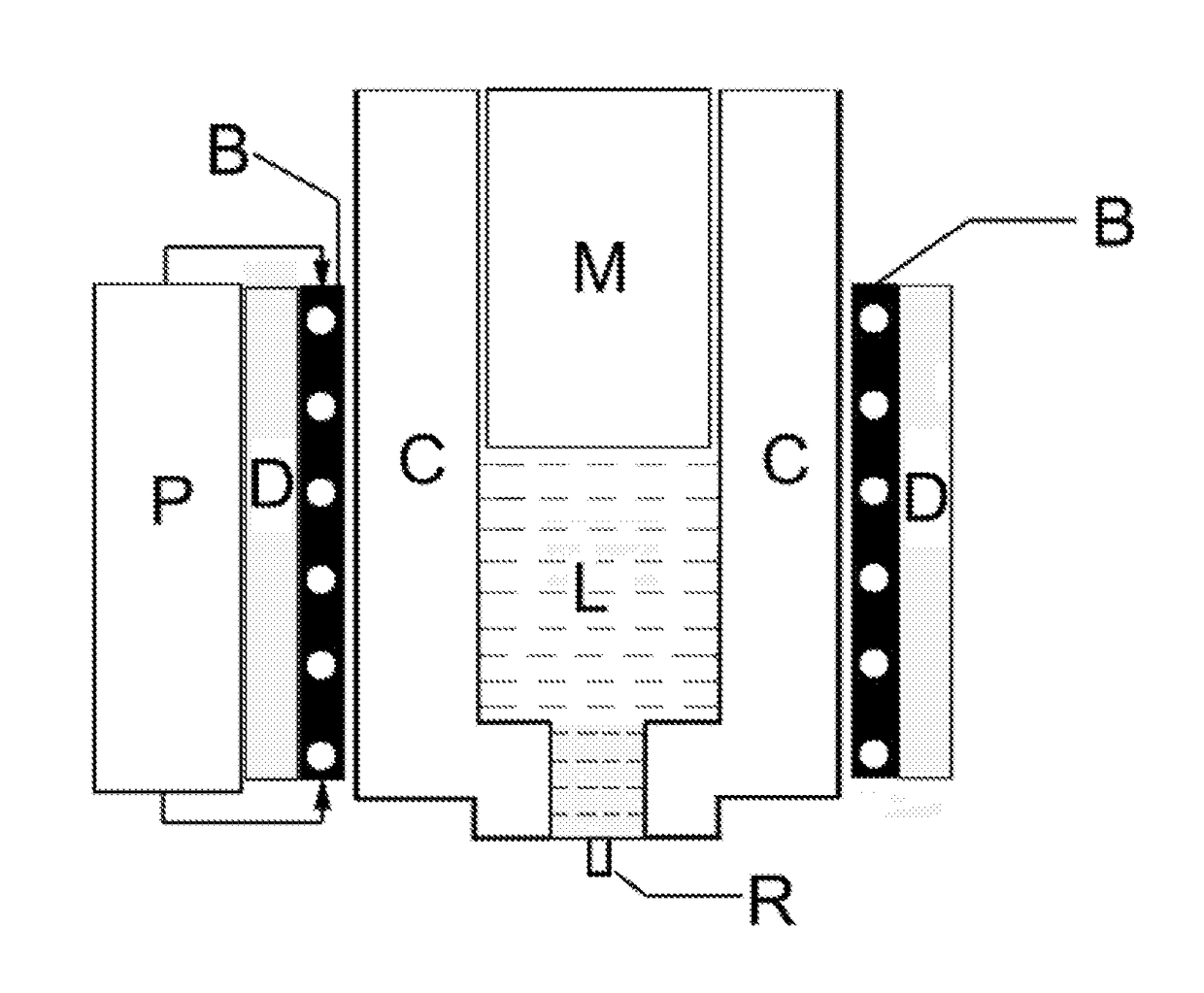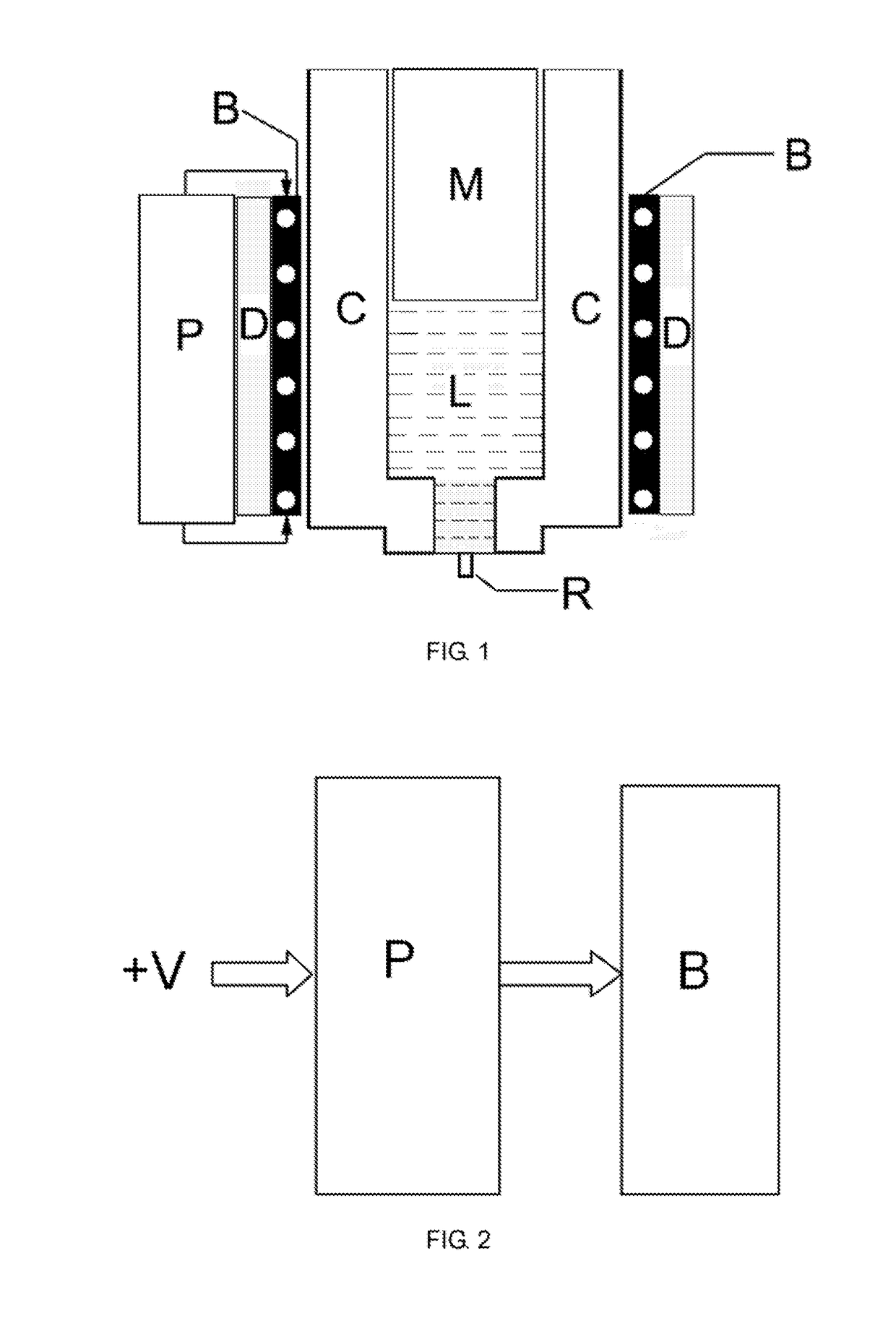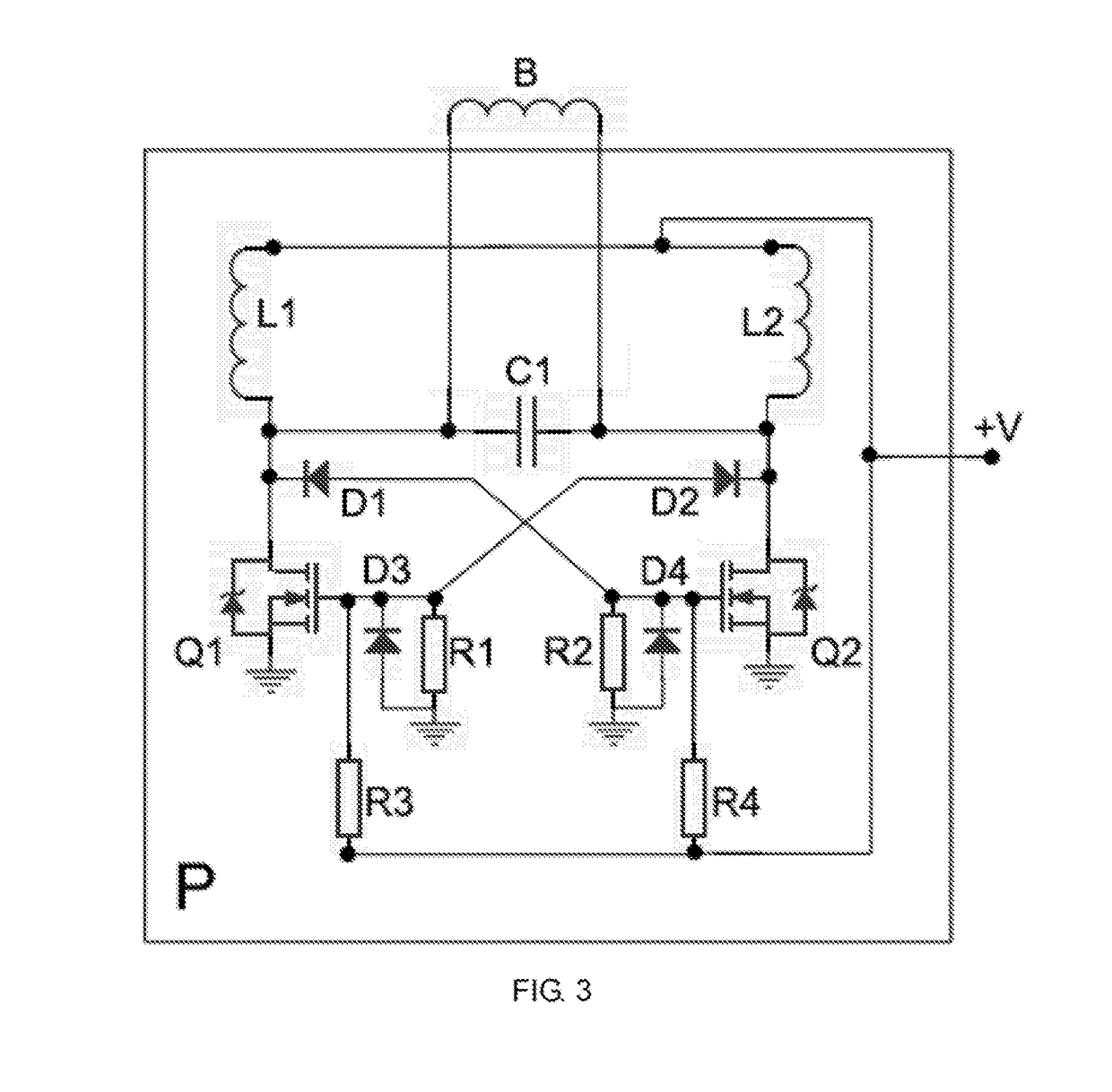Method of Rapidly Melting Metal for 3D Metal Printers by Electromagnetic Induction
- Summary
- Abstract
- Description
- Claims
- Application Information
AI Technical Summary
Benefits of technology
Problems solved by technology
Method used
Image
Examples
Embodiment Construction
[0022]For a better understanding of the invention, an embodiment of the present invention will be described in detail hereinafter in conjunction with the drawings.
[0023]As shown in FIG. 1, the method of rapidly melting metal for 3D metal printers by electromagnetic induction comprises a nozzle (R), a crucible (C), a middle-high frequency inverter power supply (P), an electromagnetic induction coil (B), a cooling device (D), and metal to be melted (M). The electromagnetic induction coil (B) surrounds the crucible (C), and the cooling device (D) cools the electromagnetic induction coil (B). The middle-high frequency inverter power supply (P) drives the electromagnetic induction coil (B) by high current middle-high frequency (200 Hz to 2 MHz) sine wave or square wave signal, a high density magnetic field line is generated in the electromagnetic induction coil (B) and produces a large eddy current in the metal (M) in the crucible (C), so the metal (M) in the crucible (C) is rapidly melt...
PUM
 Login to View More
Login to View More Abstract
Description
Claims
Application Information
 Login to View More
Login to View More - R&D
- Intellectual Property
- Life Sciences
- Materials
- Tech Scout
- Unparalleled Data Quality
- Higher Quality Content
- 60% Fewer Hallucinations
Browse by: Latest US Patents, China's latest patents, Technical Efficacy Thesaurus, Application Domain, Technology Topic, Popular Technical Reports.
© 2025 PatSnap. All rights reserved.Legal|Privacy policy|Modern Slavery Act Transparency Statement|Sitemap|About US| Contact US: help@patsnap.com



